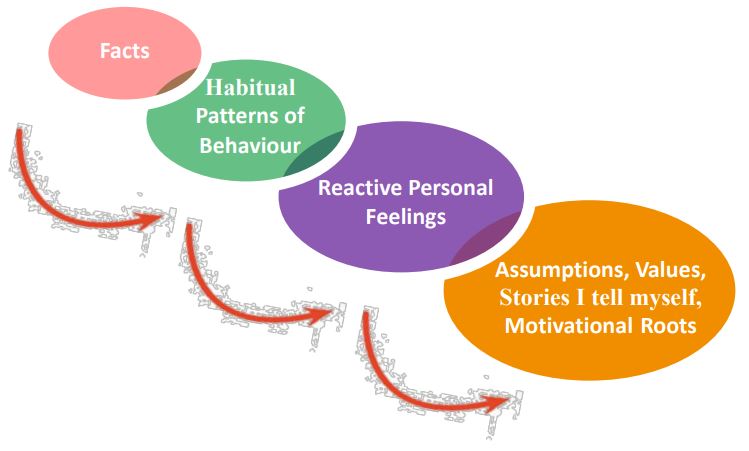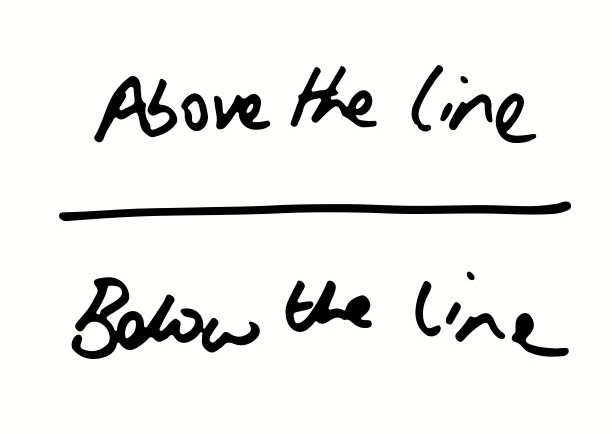Transformational models such as CLEAR, offer an alternative to the performance, solution focused process models, of GROW. With the distinctive feature of CLEAR being that you are “working with” clients, with coaching being “in service” of transforming our fundamental assumptions, core beliefs and motivations that drive our emotional and behavioural patterns, to improve capacity and performance.
What is disconnected that needs to be connected.
What is the truth that needs to be spoken, the shift that needs to be enabled.
Peter Hawkins interview
Transformational coaching attempts to move clients beyond the surface of the presenting topic, to better understand ‘who they are’. To enable clients to have a different relationship with themselves and how they see, think, feel and behave in certain situations. To explore the underlying assumptions, beliefs, values, expectations, personal attitudes that shape their experience of themselves, their world and other people. These behavioural shifts are important if client is to sustain a long term, sustainable change, that can happen when an individual looks at a challenge or situation through a different lens.
CLEAR is a framework for a process model for Transformational Coaching.
- Contracting – what is the work we need to do together? And how we will know that we have been successful? How would we need to partner, to be successful?
- Listening – completely, listen to and listening for patterns of behaviour, thoughts and feelings
- Exploring – who do you know that can achieve your aim? Can you step into their schools, what is the wildest – free the limiting assumptions and beliefs, and constraining patterns of behaviour.
- Action – planning, plus taking the client through the actual actions. To rehearse and refine our actions. Exhibit the embodied learning.
- Review – From the stakeholder world, what would be the challenge be to us.
Hawkins (2014)
Hawkins also described “Four levels of engagement.” Given his involvement in supervision, it is not surprising to see a model that supports coaches to reflect on how much of their coaching they spend focussing on the facts, or even on the behaviours, and how much on exploring the emotional patterns and core assumptions that create the story we tell ourselves and the behaviours we manifest.

(Hawkins, 2014)
In CLEAR, contracting is more important and integral. Where contracting asks, not “What would you like to happen?” But rather “What is the work we need to do together?” Moving through to “How we will know that we have been successful? How would we need to partner and operate, to be successful?”
Listening is all the performance skills, however also listening to and listening for patterns of behaviour, thoughts and feelings. Exploring draws on who the client’s knowledge of peers, who they see operating successfully and achieving, their desired aims or outcomes and using those insights to design and promote their own success? Exploring extends, potentially further, than traditional performance models. To what the client’s “wildest” actions and efforts may be, in an effort to free their limiting assumptions and beliefs, and constraining patterns of behaviour. It is definitely a bold step into the future and back.
Action retains the familiar planning approaches however, or addition, taking the client through the actual actions. To rehearse and refine their actions and to exhibit the embodied learning. Before finally, reviewing the coaching actions, from the perspective of the stakeholders and considering “what would be the challenge be to us?”
The distinctive feature of CLEAR, is that, as a coach, are working on multiple levels at the same time. With CLEAR, you are much more of a conductor of the CLEAR orchestra than the driver of the GROW(TH) bus.
During our ILM Coaching course, the discussion was very much focused around “for who” and “when” the CLEAR model was most appropriate. Certainly there was a sense that the model offered greater partnership and shared responsibility, in exploring these underlying assumptions, beliefs, values, expectations, personal attitudes that shape their experience.


